Blogs

The seminary professor, a man of color, just walked out of the academic dean’s office. He had been teaching at the mainline Protestant theological institution for eleven years. The academic dean, a white woman, called him into her office to talk about a recent article he published in a mainstream magazine. He had written about white supremacy within American Christianity and the manifestations of racism in Protestant churches, including in churches that supported the seminary. The dean noted that she had received several complaints about his article. The professor asked the dean if she disagreed with anything that he wrote. She evaded the question and changed the subject to how the professor might repair relationships with some donors. She also reminded him that his review for promotion was coming up shortly and that she worried how this “controversy” could disrupt the review. The conversation ended with no resolution, but the dean said they could revisit “next steps” in a day or two after some prayer and reflection. The seminary professor was enraged, exhausted, and frustrated. In a word, he felt defeated. The professor began teaching at the seminary immediately after graduate school. He loved teaching his students and especially appreciated the increasing racial and ethnic diversity within the student population. But over the years, the racism that he experienced, and the racial harm that he witnessed his colleagues and students of color encounter, had taken a deleterious toll on his wellbeing and health. Being called into the dean’s office was the latest in a long series of episodes in which he and other colleagues of color were assailed because of what they taught, how they advocated for students of color, and how they challenged their institution to live up to its moral, pedagogical, and spiritual commitments to racial diversity, equity, and inclusion. In recent years, seminaries throughout the United States have grappled with racial discrimination. At some seminaries, there have been a handful of discriminatory incidents whereas at other schools the problems of racial prejudice have been widespread. Immediately after departing the dean’s office, this professor sat down on a bench outdoors and wrestled with whether his meeting with the dean was racially discriminatory. The U.S. Equal Employment Opportunity Commission states that “it is unlawful to harass a person because of that person’s race or color” and explains that “harassment can include, for example, racial slurs, offensive or derogatory remarks about a person’s race or color, or the display of racially-offensive symbols.” The law does not forbid “simple teasing, offhand comments, or isolated incidents that are not very serious,” but it also outlines how racial discrimination is “illegal when it is so frequent or severe that it creates a hostile or offensive work environment or when it results in an adverse employment decision (such as the victim being fired or demoted).” The professor acknowledged to himself that the meeting may not have fallen into the legal delineation of harassment, but he knew it was racially harmful and he could feel the pain coursing through his body. The professor concluded that he had three options. The first option was to compromise and agree to a plan to talk with some of the offended donors. He would not apologize for his scholarship, but he would discuss his article with them and listen to why they thought he was wrong. The second option was to seek the support of his colleagues of color. The faculty of color had confronted the administration before, and he believed they were prepared to do so again on his behalf. The professor thought that his resistance might also garner media attention and perhaps he could write another article for the magazine explaining what happened. But the professor was weary. He thought about his health and his family. He did not know if he, or his family, had the energy required to enact the second option. Therefore, the professor was strongly considering the third option, which was to simply resign from the seminary. He would miss the classroom dearly, for it was his sanctuary, his refuge, and a holy site where he experienced rejuvenation through the wonder of learning together with his students. But in this moment, the professor did not know how much longer he could bear the pain in his teaching body. Questions What does this case study tell you about the seminary and how it engages matters of racial diversity, equity, and inclusion? What would you do if you were the professor? Are there other options the professor should consider? If you were the academic dean, would you have done anything differently in this situation? If so, what? If not, why not?
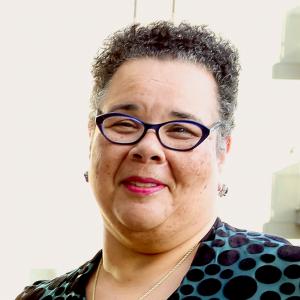
#1 I am hoping we can learn to teach toward justice. Teach what justice looks like, sounds like, feels like, tastes like, smells like. Learn to know justice with our intuitions, our inside knowledges that see, smell, taste, hear or just know because some things are just known. #2 What kind of study, pilgrimage, lessons for us to learn how does justice live and breathe and find meaning and have meaning and purpose? How does justice enflesh itself? When you gather in a circle of like-minded people working on behalf of justice and you talk about what you are teaching toward – what is the conversation if, instead of focusing upon what you are against, the sustained talk is about what you are in favor of, visioning, dreaming and futuring? How can we materialize justice? How can we learn, together, to conjure justice? What if – should we not be able to talk together, vision and dream of our collective future that then that is why we are stuck? #3 Knowledge without action is impotence. #4 War mongers depend upon our fear. They depend upon our good-hearted willingness to use up our resources in insignificant skirmishes and the business of charity for which no permanent change results. #5 This is not a question of nuance. I am not splitting hairs between knowing what you are against as opposed to knowing what you are in favor of. Knowing where NOT TO ride your bicycle is not the same thing as knowing where TO ride your bicycle. The lessons of “no, don’t, stop, halt” are not the lessons of “yes, do, proceed, go.” Living in yes takes practice. #6 You can be against war – but do you know how to work for peace? You can be against misogyny – but do you know how to love women and our contributions? You can be against racism – but do you know the cultures, ways, histories, traditions, experiences of BIPOC peoples? You can be against poverty – but do you know how to create a society without starvation, homelessness and enough prideful work for all people? We all been taught to be anti-Black even those of us who are Black. Mis-education is just that. #7 In too many of our classrooms – we are quite adept at training students in deconstruction, negative criticism, dismantling analysis and scathing critique. How do we train our students in the know-how of construction of ideas, formulation of strategies, creation of newness – regardless of field, discipline, or school? What would it mean to teach our students to be visionaries, able to converse with one other about the complexities of political identities and agendas, then, together, design the new? Simplistic thinking is killing us. #8 Learning to teach toward new visions, new communities, new systems requires different muscles, different thinking, different strategizing, different knowledges than teaching against current injustices and exploitations. This is why it is not enough to be against. Learning the terrains of being-for requires particular perspectives, new moorings, and emotional maturity to withstand those who thwart the new, the needed, the possible. #9 Octavia Butler said, “So be it. See to it.” I think she meant us, about our teaching toward justice, and right now.
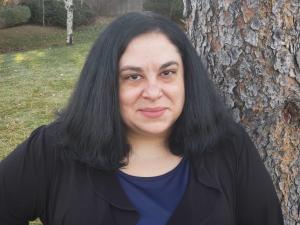
In a previous blog, I detailed some of the ways in which white students’ practices of coloniality are manifested in the classroom through co-optation, silence, and resignation. Such praxes—often unconscious and subtle—must be unmasked, especially for those who consider themselves to be allies for justice with communities of color. Such learning is not limited to white students, however, as students of color witness how instructors address dynamics of privilege and oppression in their courses and, as a result, learn who can (or cannot) be trusted to sojourn with them through their educational experiences and beyond. But how do instructors unmask such subtle, ingrained responses (also known as embedded resistances)? Wisdom gathered from decolonial scholars and teachers within theological education, engagement with materials on decolonial pedagogy, and attempts to incorporate specific practices within my courses have led me to some core insights. I offer these not as a step-by-step “how to,” but with the hopes that they might inspire others to praxis unmasking coloniality and invite colleagues and students alike to share in this work. Give more attention and intention to the processes by which learners engage with one another in the course than to the content of the course itself. I realize that this might be blasphemous to some, so try to give equal attention and intention to both the what of course materials and the how of individuals’ relations across identity, power, and difference. A few questions to think through include: What values are you explicitly and implicitly privileging in your courses? For example, if academic rigor is a central value, what standards and signals do you incorporate to exemplify rigor and how might eurowestern colonial norms be privileged within these standards? How do students come to know and experience these values and how might white students experience them differently than students of color? How might you create a space that does not privilege the voices, perspectives, and participation of those for whom the academy was designed—namely, white (and male, heterosexual, wealthy, able-bodied) students? What commitments and modes of relating are you incorporating into the course design? What role do learners have in shaping these ways of relating, and what else is needed by you as the instructor to mitigate co-optation, silence, and resignation from white students? When you encounter particular actions or patterns by white students that are likely replicating or reinforcing colonial dynamics, consider the following: Ask neutral questions—ones that do not have opinions embedded—that invite individuals to dig deeper into their own stories, assumptions, and experiences.[1] This should be done with care and the intention to assist in students’ learning, but also with a genuine desire for the instructor to learn more about what lies underneath said actions or articulations (because our own assumptions are equally worthy of investigation). Questions can also be accompanied by, or followed up with, personal observations. It has been helpful for me to use “I” statements that reference my own observations or feelings in terms of the impact of particular noticings. In these cases, I tread a careful line as someone with positional power in the pedagogical relationship but who is also a person of color impacted by colonial dynamics. At times, I name and reflect upon my own complicity and unexamined colonial actions as a woman whose ancestry includes white colonizers and who continues to benefit from a system that privileges lighter skin. If students are able to acknowledge colonial underpinnings within their own embedded resistances, invite and/or offer alternatives to such resistances in order to decolonially reframe and re-praxis. For example, with white students who rely upon silence to avoid saying “the wrong thing,” I have asked them—along with others in the space—to imagine ways of participation beyond silence that encourage vulnerability and trust. In a virtual space, this has included the use of various art forms and nonverbal visual or auditory affirmations, as well as the usual verbal contributions to synchronous discussions. It helps if values of imperfection and leaning into tensions have been privileged in the course already to encourage actions beyond silence, as well as acknowledging that silence is necessary at times. These insights reside at the water’s edge of an ocean of practiced wisdom from educators who have been attentive to decolonial pedagogies for decades. As someone who is at the beginning of that journey, I know such learnings will only be shaped and tested with more time and experience and are subject to shifts based on context, timing, and a variety of other unique forces shaping each relational moment. Depending upon what visual representation is conjured by the imagination when one thinks of unmasking, the act itself might be quite simple, a bit uncomfortable, or downright painful (especially if one is a fan of horror films like me). Unmasking assumes that there are layers hidden beneath the mask that must be revealed in order for truth or healing to ensue. If we as teachers remain at the surface of course preparation and design by focusing on the attainment of intellectual knowledge, our students fail to encounter the depths of what they both desire and deserve as divinely breathed beings. Such failure clearly is not theirs; it is ours. White students, especially those with longings to cultivate communities of justice and equity in solidarity with their colleagues of color, deserve our reflective questions, our noticings, our own acknowledgments of complicity, and our personal discomforts with tension as co-learners. The irony of unmasking colonial practices in the classroom while teaching about decoloniality is not lost on me; but the truth of the matter is that colonial practices should be unmasked in all educational spaces and places.[2] [1] Liz Lerman and John Bortsel, Critique Is Creative: The Critical Response Process in Theory and Action (Middletown, CT: Wesleyan University Press, 2022). [2] I am grateful to the following teachers and scholars who shared with generosity their wisdom, experiences, and best practices related to decolonial pedagogies: Cristian De La Rosa, Christine J. Hong, Willie James Jennings, HyeRan Kim-Cragg, and Melinda McGarrah Sharp.
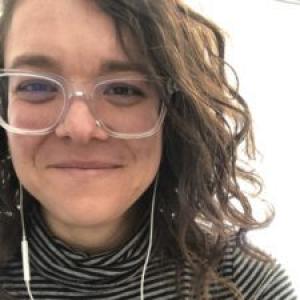
Recently, I finished a book called Midcourse Correction for the College Classroom: Putting Small Group Instructional Diagnosis to Work (Hurney et al. 2021). It’s about a program on college campuses in which faculty members invite a colleague to come to their class at the mid-semester point to find out how the course is going from the students’ perspectives. This is a program offered at my institution, and many others, usually through a professional development or teaching and learning center. The book, and such programs, got me thinking about soliciting feedback from students, beyond simply what most of us are required to do in the form of final course evaluations. Think about it: course evaluations, if we even read them (and so many of my friends don’t, because it’s such a stressful experience), only let us know how the course was, how we did, what a group of students that is no longer enrolled with us thought about our teaching and their learning. Notice the past tense. Certainly this information can be useful for future courses (I am—usually—the same person teaching Religions of the World this time as I will be next time, after all), but it doesn’t exactly help those particular students in that particular course. (And I won’t even dive into the controversy around the utility and validity of student course evaluations here; suffice it to say, those evaluations are one of the only times that we actually ask students, the primary recipients of our teaching efforts, what they think about those efforts.) The point of a program like the one profiled in the book is that we can ask for feedback from students before the end of the semester, before the experience is over, when there is actually time to make changes or reroute. The small group instructional diagnoses occur at the mid-semester point. (You can check out the book to learn more about the process; it’s pretty cool!) Typical questions asked of students are: “What has helped your learning in this course so far? What has hindered your learning in this course so far?” and “What suggestions do you have for improvement?” The focus is on learning, not what they like/dislike or the instructors’ performance. At JMU a few years back, we also added companion questions focused on the students’ own behaviors, for example, “What are YOU doing that has helped your learning in this course so far?” as a way of conveying that they are also, and I would argue, ultimately, responsible for their own learning.) Then, with this information, instructors can decide what, if any, changes or clarifications they’d like to make during a follow-up conversation with the students and for the rest of the semester. In the absence of such a program, or colleague support, you can always ask these questions yourself (e.g., through anonymous paper forms in class, an anonymous ungraded survey on your LMS, etc.). But there are lots of other ways to check in with students and get actionable, important feedback. You might have students fill out a weekly online “how’s my driving?” Google form, as one of my friends does, or you might lead an in-class discussion every so often about how everyone is doing, or you might ask students to fill out a word cloud of how they’re feeling at the beginning of class on a particular day. There are lots of things we can ask about: students’ moods, feelings, and stress level; whether they understood a particular concept, lesson, or reading; how that recent test or lecture went; what study strategies seem to be working well for them; and so on. I use a variety of ways to check in with my own students and get their feedback in all of my courses. Last semester, for example, I had experimented with a great deal of flexibility around the exams (e.g., they were take-home and not timed), to try to ease the anxiety and overwhelm that I knew students were experiencing, and I wanted to know how this approach was working for them. I spent time in class after the midterm on a debrief. It turned out that many students were taking hours to complete their work, even though I had intended the whole thing to be over in 75 minutes. This was stressing them out more—the opposite of the effect I was trying to achieve! I took their feedback, which I would have never realized if I hadn’t simply asked, and made some changes to the final exam (e.g., reduced the number of questions). Students noted in my course evaluations (as they do every semester) that they appreciated how I asked them for feedback and how I adjusted parts of the course as a result. Indeed, research on mid-semester feedback programs demonstrates that students appreciate being asked. And, of course, this kind of feedback process can benefit us too, as we open up lines of communication with students, convey care, and possibly learn which adjustments to the course will better facilitate their learning. After all, who wants to be teaching a course that’s not going well? Who wants to dread going to class every day? Who wants to be giving failing grades on projects? Who wants to be meeting resistance, but not knowing why? It often doesn’t occur to us to just ask students when we want to know more. But we can. What do you want to ask?

I am an activist educator. What this means is that I strive for justice both in and outside the classroom. I utilize critical or liberatory pedagogies as my theoretical bases. As Brazilian educator Paulo Freire said, liberatory pedagogy involves linking the word with the world. In my thirty-three years of teaching at Agnes Scott College, I have brought the things I care about, both people and policy, into my teaching. In my classes students connect with the community, both on and off campus, through practicums with local organizations and guest speakers and walking tours of the city. I work hard not to “indoctrinate” students—as if that were even possible—and to create bold spaces with my students to engage complex social and political issues. Democratic education is not “sit and git,” a phrase I recently heard an abolitionist teacher repeat to describe his resistance methods in his high school classes. It is embodied, hands-on, messy, moving, imperfect, risky, playful, and shared. The day before classes began this semester, my college announced they were extending the contract with Aramark over food service staff to the entire campus, from not previously outsourced (Facilities) to already outsourced (HVAC, electrical, and landscaping). The announcement was planned to be for Facilities only, but student leaders in our living wage campaign and some key faculty leaders organized a protest by showing up at that meeting. There is a quote from the Aramark head guy that summarizes the neoliberal take over: “Higher education needs to transform itself and get more like business and industry and understand how they can lower costs and improve service levels.” This quote exposes what James Lawson labelled “plantation capitalism” (also known as “plantation politics”), the extension of the legacy of slavery into our current economic labor relationships. My facilities colleagues are reacting with phrases such as: “We’ve been sold.” Many of us students, alumnae, faculty, and staff feel we are experiencing the caving in of whatever moral center our institution had. We are protesting as I type this blog. I have been outspoken in this movement for three decades, so students know I have firm opinions about economic justice on our campus. How do I create a bold space in the classroom for differing opinions? A favorite educator of mine, historian Howard Zinn, put in his course syllabi the following statement: This is not an “objective” course. I will not lie to you, or conceal information from you because it is embarrassing to my beliefs. But I am not a “neutral” teacher. I have a point of view about war, about racial and sexual inequality, about economic injustice—and this point of view will affect my choice of subject, and the way I discuss it. I ask you to listen to my point of view, but I don’t expect you to adopt it. You have a right to argue with me about anything, because, on the truly important issues of human life there are no “experts.” I will express myself strongly, as honestly as I can, and I expect you to do the same. I am not your only source of information, of ideas. Points of view different from mine are all around, in the library, in the press. Read as much as you can. All I ask is that you examine my information, my ideas and make up your own mind. (Failure to Quit: Reflections of an Optimistic Historian. New York: South End Press, 2002, p. 29) Whether acknowledged or not, all pedagogy is a pedagogy of place; the place of our classroom and campus, in concentric circles out, and back. This fall I began my third semester teaching a first-year required Leadership 101 course. My topic is “Religion and Economic Justice.” The beginning point is an “economic autoethnography,” a way for students to tap into their own intersectional social locations to understand economic (in)justices. The class of seventeen students is diverse, with a majority of students of color, with former refugees, international students, first generation students, along with several from single-parent, low income families. Some examples of writing prompts from this autoethnography assignment include: What is your understanding of social class from your own background? Tell a story. What is your own labor history? Your parents? Your grandparents? What institutional manifestations of classism have you seen and/or experienced? (e.g. health care, employment, education, etc.) In what ways has your social location and identity and also experience of social class and labor influenced your definition of “leadership”? What role has religion had (directly or indirectly) in your understanding of social class, classism, economic justice, and leadership? In this course students learn about our campus living wage campaign, work with a homeless shelter across the street from the college, engage leaders in local economic justice movements (the Beacon Hill Black Alliance for Human Rights, the Georgia Poor Peoples Campaign, and the film director of the new documentary No Address: Part 2: On the Criminalization of the Homeless in Atlanta) and national movements (in particular the Poor People’s Campaign: The Call for a Moral Revival). From their own personal stories, students dive into leadership stories—from student leaders in the living wage campaign, to more well-known leaders from the past or present (e.g. James Lawson, Bishop William Barber, Rev. Liz Theoharis, Grace Lee Boggs, M.L. King, Jr., Marian Wright Edelman, Hosea Williams, Dolores Huerta, Bayard Rustin, and others) as a framework for reflecting on their encounters during the semester. As we engage the real time and real world happenings of economic injustice and movements to build a better world in the here and now and for those who come after us, I want my students to wrestle, as I do, with really complex issues for which I do not have “the answer” or solution. And I invite them, in the words of Myles Horton of the Highlander Research Center, “to make the road by walking” for “the long haul.”
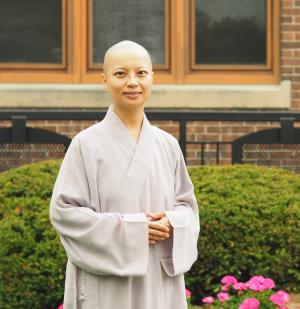
From a broader aspect, school closure during the outbreak of the Coronavirus pandemic created a crisis in the global history of education. But, personally, this crisis brought about opportunities, and the pros outweighed the cons. When classes moved online, the unexpected challenges of educational disruption inspired me—more precisely, forced me—to have a critical reflection on what exactly multimodal communication means in higher education. This unique moment also made me rethink how and why physical interactions play a critical role in the process of learning. These in-depth reflections have reshaped my teaching styles and pedagogical skills, especially in my Zen Buddhism course. The lack of physical interactions during the campus closure created more devastating impacts on my Zen Buddhism class than on my other courses. This intermediate-level class guides students to learn thoughts and practices related to mind cultivation in Buddhist meditation traditions in China, Japan, and the United States. I faced a challenging task: students mainly focused on pursuing “good grades” rather than connecting their learning to the real world. Without classroom engagement, students ended up memorizing knowledge rather than developing insights. This issue is worth seriously considering for instructors. I realized that providing students with opportunities for firsthand experience is more significant than teaching them theories described in textbooks or PowerPoint slides. When we returned to the normative classroom-based environment after the pandemic, I redesigned my course syllabus and included a tea ritual to boost students’ engagement. This change aims to stimulate cognitive abilities and develop a sense of self-awareness. Lesson Plan: Students are divided into five groups. Each group selects a “host” to make tea, and other members become the “guests” who experience mindful tea drinking. I explain the procedure of tea making and each student takes turns practicing the etiquette of a “host” who serves tea. Students are required to observe their physical and mental states during the entire process. After the tea ceremony, each group discusses why tea drinking is a type of mind cultivation and whether the ritual can evoke peace and awareness. The questions that students discuss include: How does tea drinking bring about sensory awareness of the whole person (smell, vision, taste, and feeling cold or warm)? Why and how does tea drinking denote a “healing journey” from a personal aspect? How is tea making as the subject of concentration be unique, when compared with mediation? How is tea drinking in the Zen tradition different from other types of drinking culture (for example, coffee)? During the discussion, I reduce my input to eliminate the “authoritative” voice and remind students that it’s their time to share their self-discovery, which is beyond right or wrong answers. Here is what I have learned from students’ feedback. Students rediscover their sense of awareness: While comparing tea drinking with meditation, most students respond that the concentration produced by meditation is too subtle to detect. But drinking a cup of tea can stimulate multiple sensations such as smell, taste, and physical feeling. Because tea is visible, touchable, and noticeable, students feel it is easier to bring their mind and body together. Students said that they are able to perceive the whole body as a learning tool. Through the integration of physical engagement in learning, students acknowledge that bringing body and mind together is the key to producing insights. Limitation of language: When students discuss and share their feelings, they find out that language has certain limitations and their sensations and states of mind are ineffable and beyond language. Some students struggle to find words to express their feelings. A student said that seeing the world through the lens of “ritual” is very distinct from that of “textbook.” All students agree that this activity diversifies their learning resources and supports other modes of learning such as reading or writing papers. Daily activities create opportunities for spiritual cultivation: This activity enables students to extend the tea-drinking experience to reflect on their other daily routines. Students report that a five-minute tea drinking is a doable and manageable daily opportunity for stress reduction. Students also mention that the quiet moment is a time of mental purification, and they hope to create more occasions to do so. A student suggests that the college should consider providing free tea ceremonies at quiet locations around campus to improve student self-awareness and relaxation during break time, especially the midterm and final exam week. This teaching experience is meaningful and rewarding because I see smiles on students’ faces.
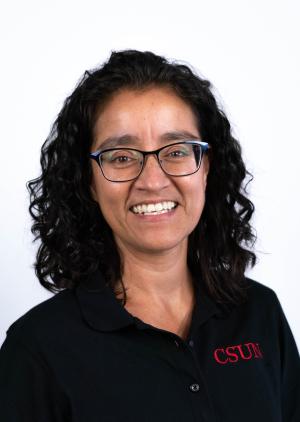
During my first year of teaching, I participated in a Faculty Learning Community that was designed especially for first year faculty. At one point during our bi-weekly gatherings, one of the facilitators made the comment, almost in passing, “We teach humans, not subjects.” My brain shifted gears. His statement helped me place the student in center view instead of the subject and content of my teaching. He was from the education department, so it made sense to me that he was bringing us back to pedagogy. His admonition was that we must first and foremost attend to the humans before us. The moment has stayed with me as an ongoing question—what does it mean to consider and teach the human before me, first, and my course subject, second? There are a couple workshops I have participated in that have helped me fill this in further—one on culturally-responsive teaching that builds on research in neuroscience and cognition, and another on what’s called small teaching. In themselves, these are full and rich frameworks with corresponding research and publications. Still, there are a couple key, practical, contributions they have made to my teaching that have stuck with me and help me keep the human brain in mind—and where my understanding of embodied teaching begins. The first key learning about the brain is that it cannot learn when its amygdala is activated (often referred to as the reptilian brain). The amygdala is activated by stress, anxiety, anger, hunger, fear. It is instinctive, unconscious, and controls our basic body functions, increasing our heart rate and blood flow, for example, when it senses danger. If/when our amygdala is triggered enough, it can keep us in a guarded state that makes it hard to stay open enough to learn. My students’ ability to trust me, then, at least to trust me enough so they can stay relaxed enough to learn becomes my first order of business as I attend to them as whole human beings. Attending to their amygdala is important for them to be ready for the actual task of building on their knowledge and stretching their brains as I invite them to reflect critically upon religion—which is an often-fraught subject that raises people’s defenses. This is where my learning about “small teaching” comes in—specifically the beginning and end of class. The first and last five minutes are key for easing students in and out of the learning space. I am very intentional about how I start and end the class. At the start of the class, especially at the beginning of the semester, I make sure to cover a few bases: (1) give them something to do so that they have a productive way to channel any anxious energy; (2) humanize myself to them so that they can begin to trust me a little; and (3) let them know they are allowed and encouraged to take care of themselves in our classroom so they know I respect them as autonomous beings. I have a variety of ways to communicate these things to them, but I will paint a picture here of a common scene from day one in my typical classroom. As students enter the classroom (whether physical or virtual), a slide is already posted for them to reflect on relating to the topic of the day that includes an image and two questions: What do you notice? What do you wonder? This gives them something to do while also bringing them to the present moment. Then as I call us together to start the class, I welcome them and ask if anyone has a story to share about some recent good news or something new or fun they have done recently—there are usually one or two brave souls who are willing to share about their new pet or job or recent trip. This helps us all get a glimpse of one another as who we are outside of the classroom space. It lightens the mood a little. Finally, right before we start our discussion, I let them know that they are free to move around, stretch, do what they need to do to be comfortable in the class—they can even walk out if needed. I want them to know that I respect their autonomy and support them doing whatever they need to do to be well and to stay present in as much as it is possible. Those are the first five minutes, where I try to help us arrive to the present moment and also try to build their trust so they are willing to hang in there when ideas get challenging. Then the last five minutes are crucial for helping students integrate the day’s learning and give their brain a chance to wrap things up. I never end my class with announcements or reminders—those come earlier—instead I end with a reflection exercise that gives them an opportunity to review, synthesize, or make note of any lingering questions they can bring to the next class. The point is to not send them out with an activated amygdala or hurl instructions at them at the last minute. And having the class end on a calm note is a way of setting the tone of “We got this, we are good for today, and we will continue next time.” As they walk out of class is when they most often reach for the snack box. In my in-person classes, I always bring a box of snacks that has at least three kinds of bars in it (cereal bars, protein bars, granola bars). From day one I let them know that our brain does not learn when it’s hungry and I want them to be able to learn, so they can always count on the box of snacks. In a way, my approach to teaching the human starts with attending to both the brain and the stomach —because it really is all connected anyway… right?
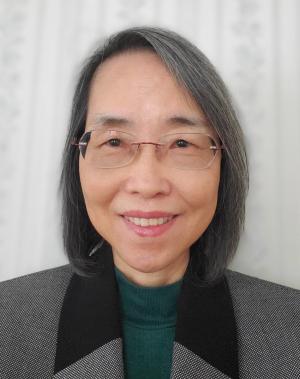
As a toddler, the Grammy-winning musician esperanza spalding heard Yo-Yo Ma play cello on Mister Roger’s Neighborhood and decided she wanted to play music like that. In an interview, she said it was Ma’s “total body activism during the music” that captivated her. A jazz-bassist, vocalist, and composer, esperanza moves with her music, which defies genres, and hopes to create a physical experience of resonance in her audience. As a professor of practice at Harvard, she hosts jam sessions at the studio at Harvard’s ArtLab so that participants can improvise and make music together. In her heart, she wants to be someone in “deep co-learning” with her students. How can our classrooms be spaces of co-learning that welcome creativity, collaboration, and even improvisation? How can we recognize the body as a valuable site of learning, so that the knowledge we gain would not be over our heads, but would speak to and touch our innermost yearning and desires? If this is difficult to do in an in-person classroom, is there any hope for online teaching via Zoom? Last spring, I taught an online course on Spirituality for the Contemporary World for Master students and community learners. I have learned so much about embodied teaching and learning: guided meditation, listening to music and poetry, art appreciation, rituals, Tai Chi, cross-cultural discussion, and much more. I want to reflect on a few memorable moments from the class. I invited Professor Cláudio Carvalhaes to speak on “The Pandemic and the Re-imagination of Rituals” because I knew him to be a creative teacher, preacher, and liturgist. Carvalhaes discussed the relation of ritual to our body and earth. He shared his experiences of leading workshops on liturgies on four continents of the world, which led to the book Liturgies from Below. At a time of crisis, he said, it is important to draw from the experiences of the community to craft liturgies and prayers that respond to the people’s needs. At the end of the presentation, he invited students to offer prayers with the movements of their bodies. He explained what he was going to do and invited students to warm up by standing, shaking loose, moving from side to side, and turning around. He demonstrated how to do these to ease the students. Then he picked up his guitar and sang four stanzas of a song. As he sang the first stanza on happiness and thanksgiving, he invited students to move to embody memories of happiness and joy. Similarly, he sang the second stanza on sadness and the third one on anxiety and invited students to imagine movements to express them. In the final stanza, he closed by asking God to hear our prayers, which were all in our bodies. During the pandemic, feelings of grief, helplessness, and uncertainty are stored in our bodies, as the book The Body Keeps the Score says. Acknowledging these feelings through movements of prayers helped us to connect with these emotions. Doing this together made us feel less alone. Students appreciated the time with Carvalhaes as they were given the freedom to experience the power of ritualizing through their embodied selves in their own ways. I also invited Episcopal priest and artist the Rev. Susan Taylor to lead a class on spirituality and art. Some years ago, I invited her to speak in my class in person and she brought a lot of art supplies with her. She wanted us to try out and create a collective art project at the end and the process was inspiring. This time, I told her, the class was online and I would appreciate it if she could include doing art in the class. She told me to ask students to have their art supplies, such as painting and drawing mediums, brushes, pieces of paper, color, palette knives, etc., on hand. She made a presentation on how arts help individuals and churches during a time of pandemic and strengthen our relationship with God. She shared photos of her art and included a detailed explanation of the process of working through a 7’x 6’ painting entitled “Skyflowers.” Introducing the process of how we would make art together, she offered a lot of encouragement for us to explore and tune out the self-judgmental voice. On Zoom, we could see her painting in her studio, adding shades and layers of colors to her work. We spent some time creating our own art and afterward we shared our experience of making art and what this meant to us. We also discussed how to include art in our own spiritual life and ministries. The brief moment of creating art transformed us from spectators to participants. It was wonderful to see students trying to express themselves in new ways and hear what art evoked in them. Since the class met for an hour and a half in the evening, I decided to teach Tai Chi movements for several minutes in the middle of each class. I began by teaching simple Tai Chi exercises so students could understand the principle of balancing Yin and Yang in the movements. I also posted a video from YouTube so that they could follow the exercises if they wanted to practice more. After we practiced these exercises in several classes, I was able to teach them several Tai Chi movements by breaking down the steps. Even though we practiced only a few minutes in class, a student was motivated to learn further about the practice of Tai Chi. We easily succumb to Zoom fatigue in online classes when teaching is didactic, usually with a PowerPoint presentation, and students become passive onlookers. But there are many ways to expand the possibilities of sensory experiences, even in a Zoom meeting. esperanza spalding invites us to think about teaching as embodied adventures. I have been stretched and learned so much from my co-learners.

We were halfway through the first day of class when a student started viciously criticizing a TED talk I had just shown. It wasn’t hard to determine where the student’s criticism was coming from. He was furious that I would consider a woman worth listening to. He was spewing misogynistic hate in a room that was 70 percent female. On the first day of class. I responded to the student’s misogynistic rant in my usual way. Trying to stay calm, I seized on something he was saying I could spin into a statement I agreed with, interrupted him with a “yes, and,” and proceeded to explain the value of the points made by the woman in her talk, being sure to emphasize how important and insightful they were. I never heard a misogynistic word out of him again. He never mistreated his female peers (I monitored closely) and by the end of the term was thoughtfully engaging with readings by female authors. It probably helped that he was surrounded—in my class alone—by thirty brilliant young women who were living proof of women’s intellectual capacities. It also helped that I was a white male, in a position of authority, who had not let him get away with saying misogynistic things unchallenged, even if I did use a strategy inspired by nonviolent conflict transformation techniques rather than direct confrontation and criticism. This story illustrates the power of embodiment, even in the form of a video. I doubt assigning a book or article by a woman would have elicited the same visceral reaction. Honestly, it usually takes me strategically getting a little angry in class to get students to stop routinely misgendering authors as “he,” despite my best efforts to ward off that habit, including through strategies like making cover pages for PDF readings that include a short biographical statement on the author. We often think of “embodiment” in teaching as referring to the kind of presence the teacher has in the classroom. Perhaps we also need to find ways to apply embodiment strategies to the authors we assign. Do we lose some of the power of a diverse syllabus when the authors remain just names on a page? In my classes, I try to use media to help highlight the diverse array of voices I hold up as worth listening to. Sometimes I assign a video or podcast or invite a guest speaker in person or on Zoom, but since most of the assigned readings are books, individual chapters, and articles, I also find other ways to help my students see our authors as real people. I often weave short videos or clips of lectures by our authors into my lessons. Lacking those, I’ll include a photo of an author alongside a quotation from their work in a slideshow. These aren’t complicated interventions; however, I fear that without them my students miss the diversity in my syllabi. This is perhaps most true of those students who most need to see it, those so steeped in patriarchal culture that even a “Barbara” or “Maria” becomes a “he.” Such interventions might not be the best idea if the message your reading list sends is that your field is dominated by cishet white men or that they are the only ones worth listening to, reading, or studying. Applying embodiment strategies to authors assumes that we’ve already done the work of diversifying our syllabi with the voices of those whose gender identity, sexual identity, racial identity, ethnic identity, nationality, language background, disability, age, religion, socioeconomic status, etc., both reflect the full diversity of humanity and affect their scholarship. As a white male, I don’t often deal with the kinds of challenges to my authority and expertise other educators experience, at least not from my students (as an adjunct, administrators and my tenure-track colleagues routinely devalue my expertise and experience). This means that my embodiment in the classroom is not particularly fraught. If anything, I have to take care not to be too intimidating lest my presence stifle participation. My identity and positionality also give me a platform and a responsibility to challenge worldviews that dehumanize and devalue those whose backgrounds, identities, and experiences are different from mine. Making the authors in my syllabi a little more real for students is one small way I pursue that goal.
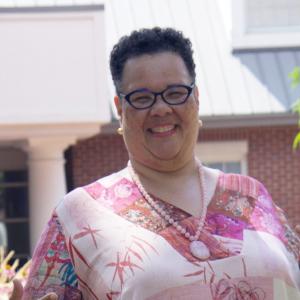
#1 It is not enough to teach against injustice in its myriad forms of racism, sexism, islamophobia, homophobia, patriarchy, classism, ableism, antisemitism, white supremacy, etc. It is not enough to rail against what is wrong and what must be changed, restructured or done away with. We, those entrusted with the responsibility of educating, must teach toward, teach visioning, teach futuring, must teach what we are in favor of, teach what we are for, i.e., the complex notions of community, solidarity, partnerships, coalitions, and collaborations. #2 We cannot settle for, nor be placated by, that which comes with individualized successful escapes, successful assimilation, successful fleeings into the dark nights, successful trickeries, and moments when one or two outsmart, outwit, out fox, or beat back the oppressors. While that is good, that is not enough. These kinds of successes are illusions and meant to deceive. They come at a high, high price. #3 In taking up the struggle, fighting, resisting, we must be about more than …. swimming against the tide, standing against the wind, raising a fist against evil or bullies or the common enemy or fiend. Resisting. Clinching our fists, fighting, while necessary, keeps us from handling tools and opening our hearts. All of these acts-against are, indeed, noble – but not enough. Our liberation must include acts of vulnerability, creativity, imagination, risky business and designing for new kinds of hopes for communal living. #4 We, the collective us – those who are mindful, aware, woke, conscious, faithful, and living as if all lives depend upon all other lives, and all Black lives matter, and that the human family or our earth-house really truly means everyone, all lives matter, and not just a select few who possess all the power, and land and clout, and the vote, not to mention all plants, all animals – the seen and unseen which make-up the tapestry that is our planetary home, all must understand that passive waiting or simply resisting is not enough. It is foolish to think that we can save just a small percentage of the people and the land, and the animals if the rest goes asunder. We are all interconnected. All life affects all other life. The collective us must teach to understand that all of humanity are intertwined and interrelated, and our survival is threatened by the overwhelming greed and selfishness of a few; so, we must decide to teach what we are in favor of and not just what we are against. #5 Friends, Toward what will we teach? What will we be for? What will we be in favor of, say “aye” to? What vision will we cast for our community as a common good? What will we build together? What will we sacrifice, together, for all our children? Who will ally, join, partner, pioneer, and experiment? With whom will we be in solidarity? We know that what we imagine will happen; that’s the nature of imagining. #6 And if we can, and if we do, make this shift – move from being against to working for that which we are in favor of, then: How will we teach our students to think strategically for what we are for? To mobilize for the new marvelous? To know practices of creativity, healing, dream casting, imagination, wonder, planning, no longer to combat against, but to use their energies for what we have agreed will be our hopeful future? How will we teach our students to call up from the deep? What will it mean to teach our students to depend upon their own abundances, knowledges, courages, and hard work? Can they learn to cooperate rather than compete? #7 Teacher, what do you champion? I am hoping it is love, compassion, empathy – for all of life – Lottie, Dottie and Everybody! And that you come to believe that life for some does not mean living at the expense and fodder of others who have been, for generations, weakened, impoverished, downtroddened, and victimized for the survival and thriving of a few others, selected as special, chosen, or entitled by birthright or muscle or raw greed.
Categories
Write for us
We invite friends and colleagues of the Wabash Center from across North America to contribute periodic blog posts for one of our several blog series.
Contact:
Donald Quist
quistd@wabash.edu
Educational Design Manager, Wabash Center
Most Popular
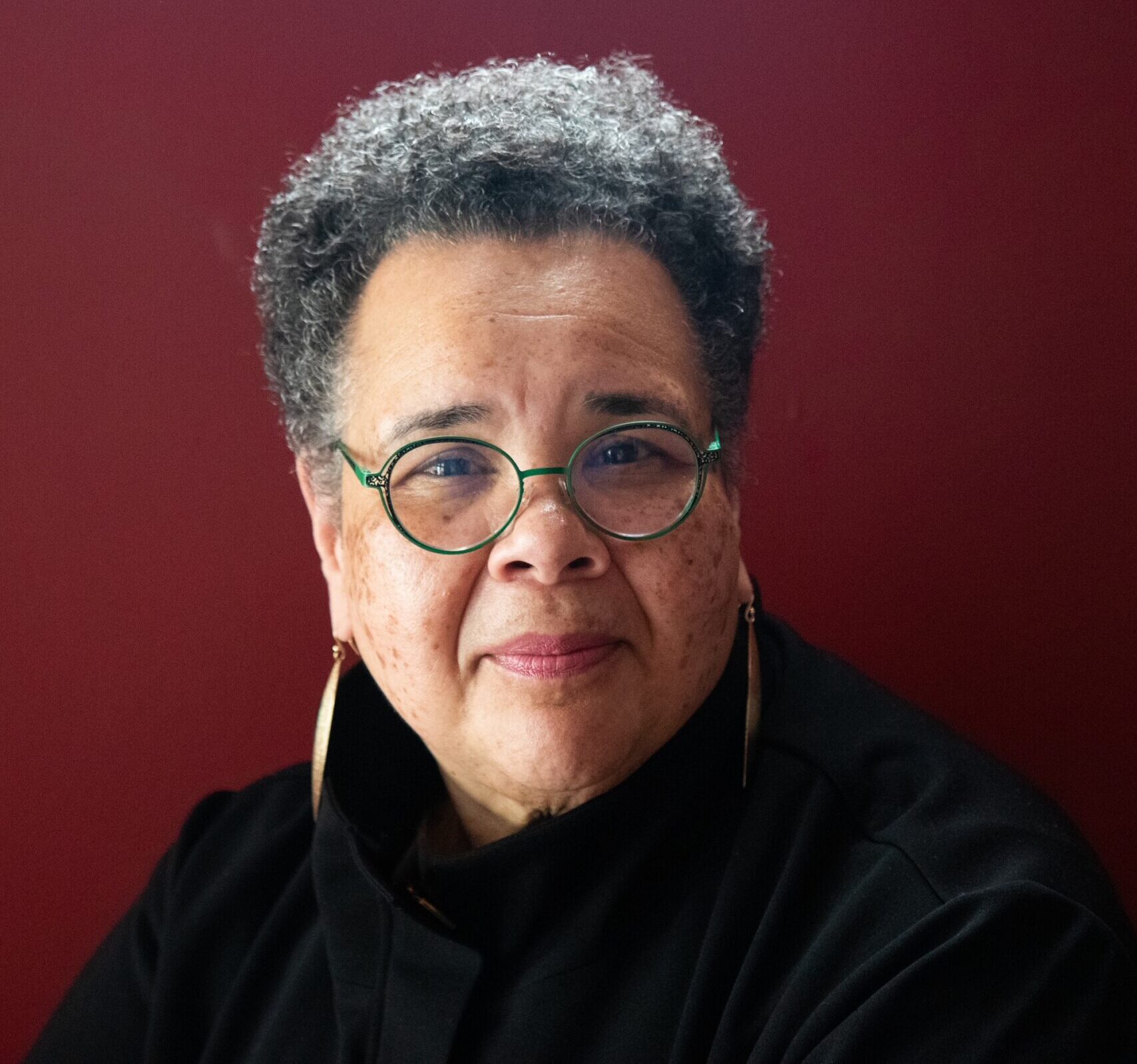
Are You Okay?
Posted by Nancy Lynne Westfield, Ph.D. on October 1, 2025
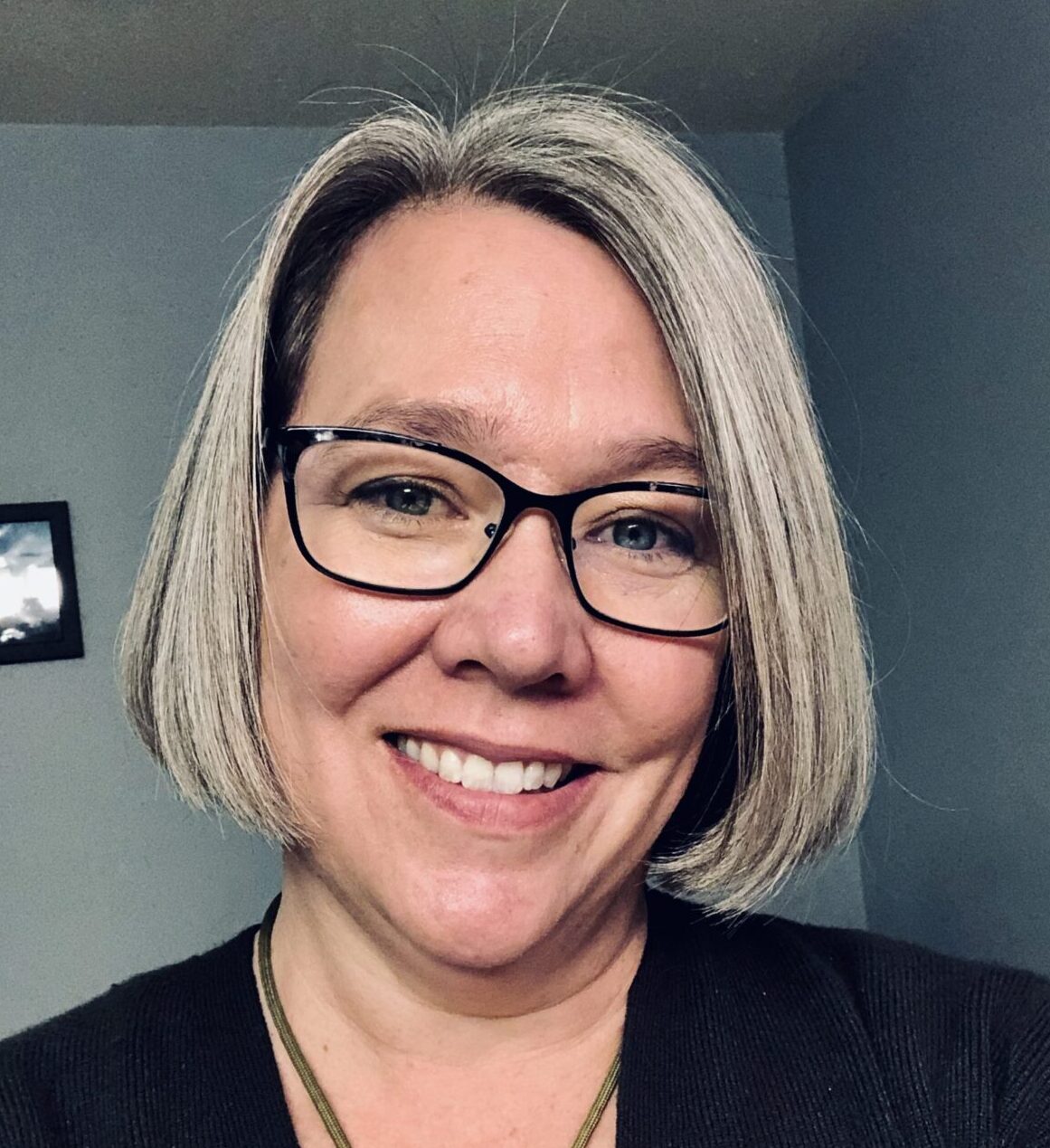
On Plagiarism and Feeling Betrayed
Posted by Katherine Turpin on October 27, 2025

Executive Leadership Involves New Questions
Posted by Nancy Lynne Westfield, Ph.D. on December 1, 2025
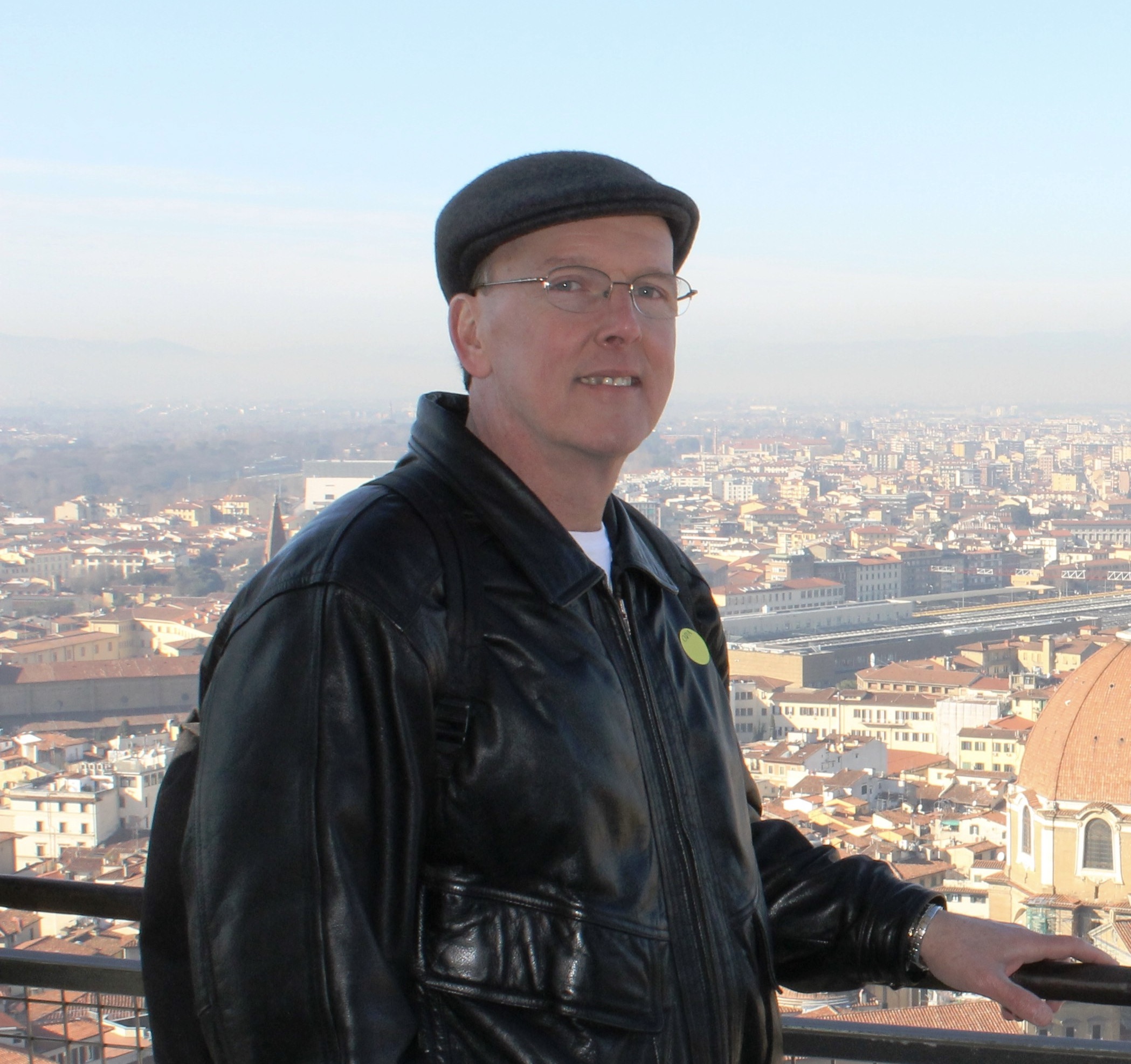
Embracing the Imposter Within
Posted by Fred Glennon on September 15, 2025

Xenophobia
Posted by Daniel Orlando Álvarez on October 15, 2025